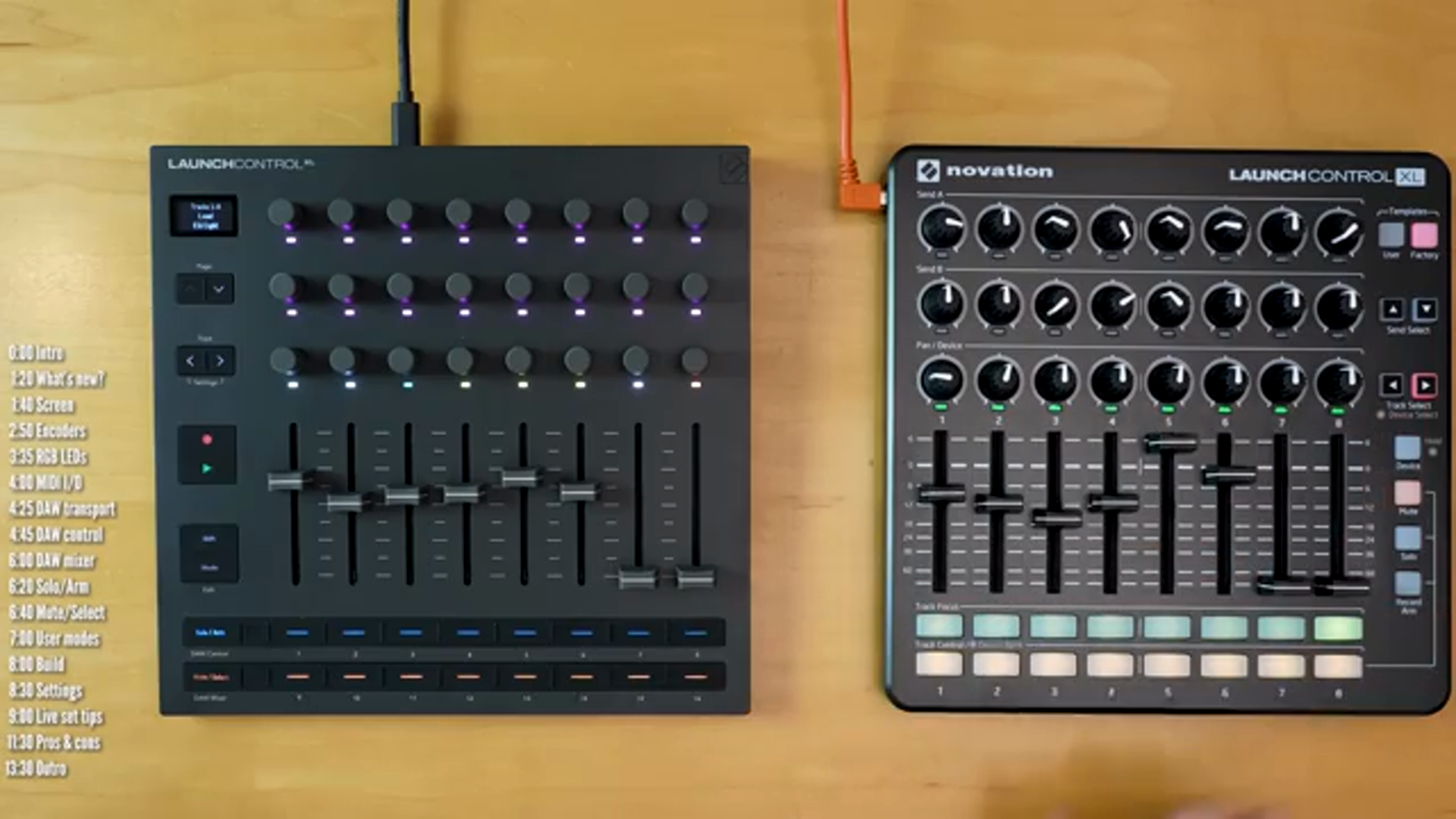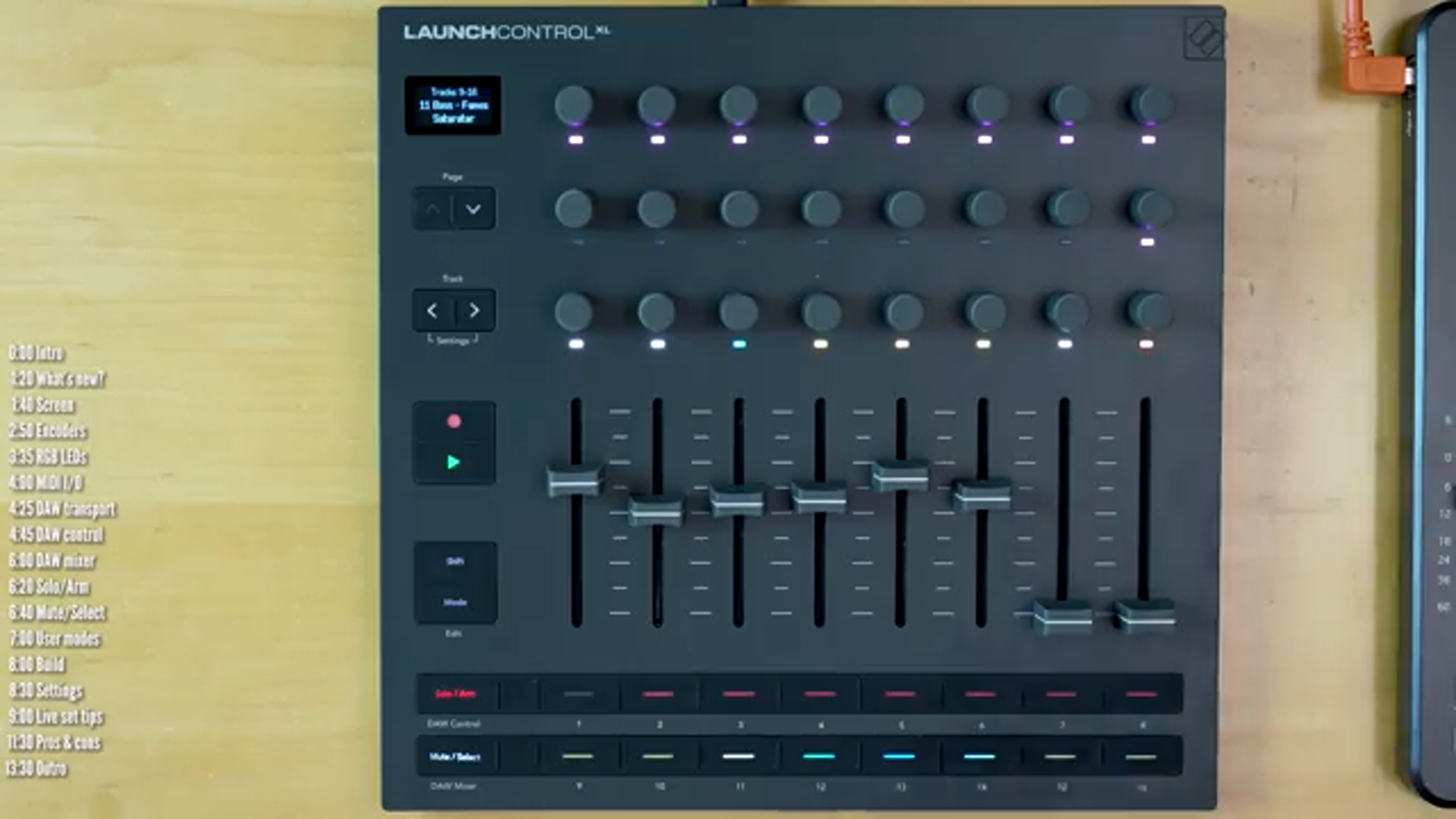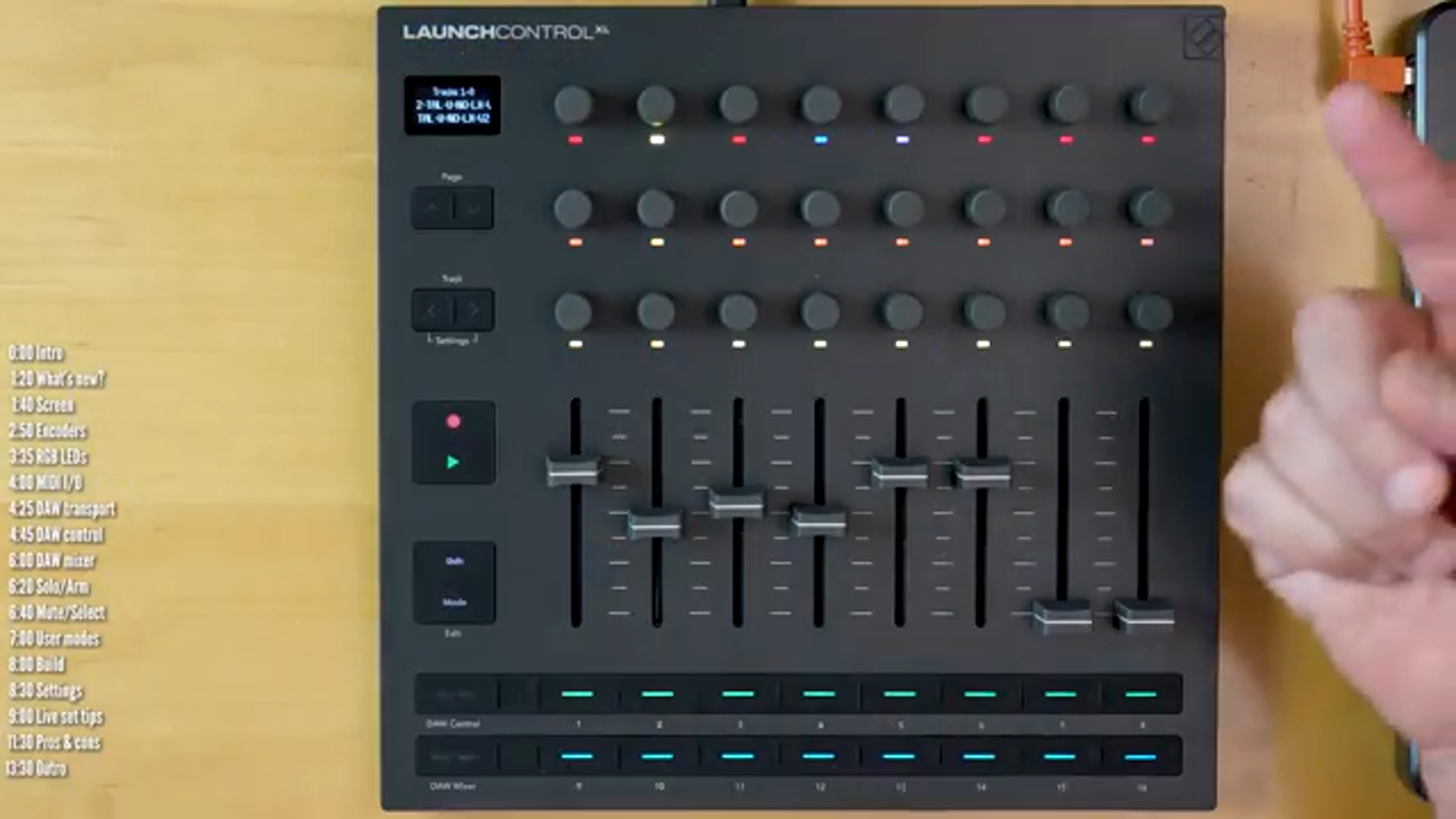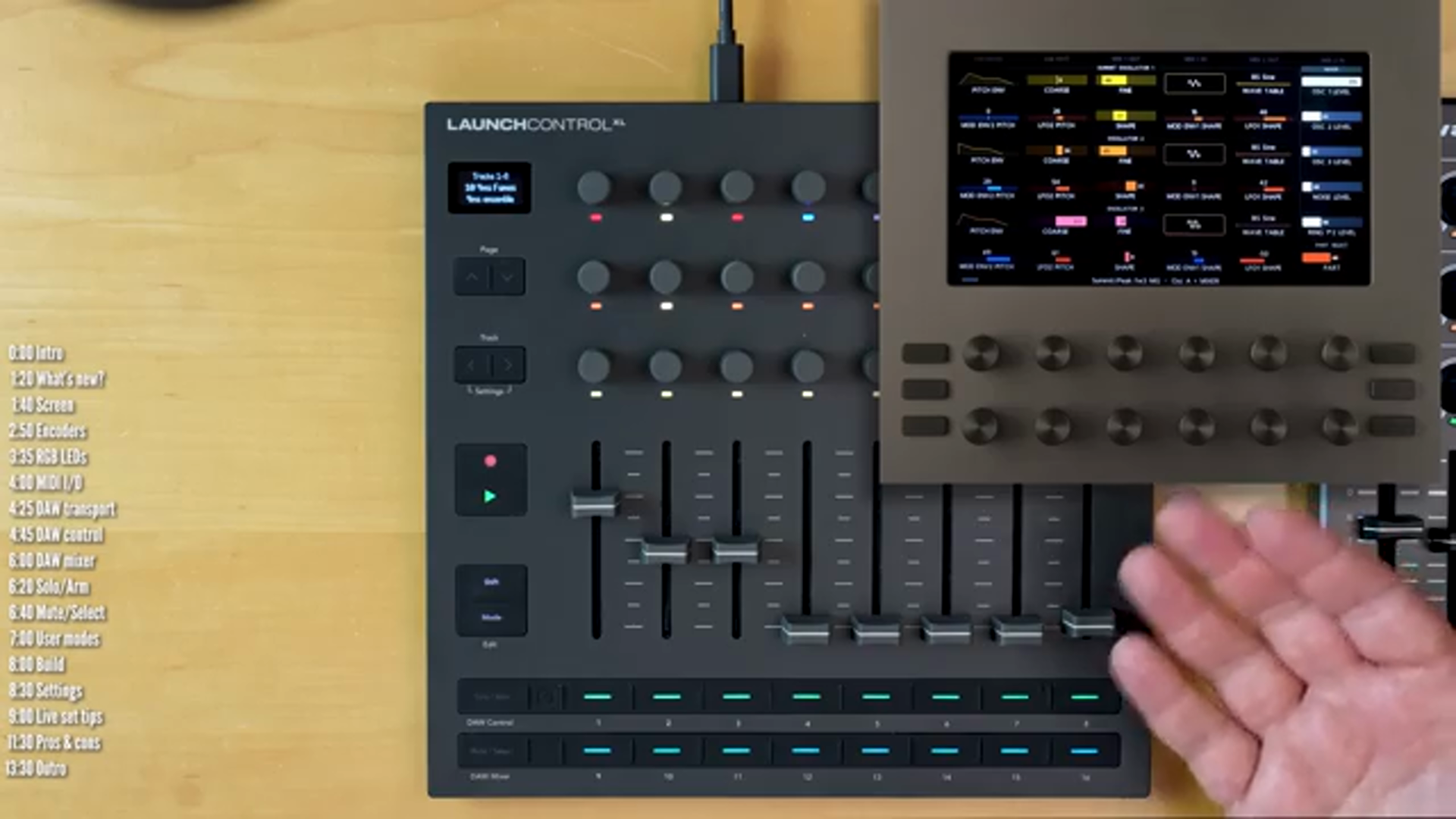In the latest review from Loopop, he dives into the novelties of the Novation Launch Control XL3, comparing it against its predecessor. Known for his in-depth synth explorations, Loopop delivers insights into this MIDI controller’s expanded capabilities, from RGB LEDs to its screen advantage. Dive in for a proper breakdown of live set tips and tweaks that even the most stoic of us would enjoy.

29. June 2025
JET
Loopop Adds Punch to the Novation Launch Control XL3 Review
New Screen, New Attitude
Loopop kicks off his review with a headlong dive into the fresh features of the Novation Launch Control XL3, and straight away, it’s clear: this ain’t your nan’s MIDI controller. The inclusion of a small OLED screen, while not a complete shocker, adds a new layer of functionality. Seeing the parameter and track names directly is a godsend when you’re juggling a complex DAW setup. It’s akin to having a cheat sheet at a pub quiz – makes you feel like you’re ahead of the game.
Still, it’s not all sunshine and rainbows. With its lack of separate screens for each knob, there’s a bit of acrobatics involved when shifting values. But as Loopop aptly points out, the price point for separate screens would be through the roof. The OLED does a decent job, with clear viewing angles that wouldn’t look out of place in a dingy London pub, guiding you through your set without forcing you to squint like a pensioner without glasses.
Although controls aren’t touch-sensitive, it’s a minor hitch in an otherwise well-kitted ship. There’s still a bit of room for Novation to grow, especially with features like preview functionality currently not extending to faders and buttons. It’s like ordering a kebab and realizing they forgot the chilli sauce – a tad disappointing, but not a deal-breaker.

"The screen also shows you which range of tracks you're controlling."
Endless Rotaries and Full-Colour Flares
The evolution from pots to endless encoders on the XL3 is nothing short of game-changing. Loopop goes to town on how these encoders kick away the annoying gremlins of parameter value pick-up issues. It’s like swapping your dodgy old motor for a brand-new engine – smooth sailing with no bumps.
One snag is the absence of the tactile feedback when you hit a centre or an end value, but the pros outweigh the cons here. The RGB LED integration makes it seriously vibrant; now there’s something for the button pushers to drool over. With sixteen vibrant colour choices, it’s like a rave in your living room, perfect for those who appreciate a bit of theatrical flair in their creative spaces.
For those still clinging to their Mark IIs, it’s time to ungrip. The RGB LEDs allow for neat customization – an evolution from the limited colour options of its predecessor. It’s the kind of upgrade that might just convince those cautious naysayers to finally dip their toes in the water. But the biggest win has to be the new MIDI in, out, and through ports. The XL3 cuts the middleman, making direct control of hardware gear a reality without needing a USB MIDI host. It’s a win-win, tidy, and efficient.
DAW Domain: Reinventing Control

"In DAW Control mode, we can control 16 device parameters directly."
Diving into DAW integration, Loopop showcases the XL3’s robust interaction with popular platforms like Ableton Live, Logic, and others. It’s like the XL3’s graduated from a local gigs amp to stadium-level performance. Additional transport buttons give it a more comprehensive suite of controls. The play and record functionalities ensure that whether you’re tracking a spontaneous jam session or a meticulously planned set, you’re covered.
The dual DAW mode functionality is perhaps the star. With DAW Control and DAW Mixer Control modes, flexibility is the name of the game. In DAW Control mode, you have sixteen device parameters at your fingertips – double the domain the Mark II had. It’s an abundance of options, akin to being handed the keys to a sweet new ride and told to go wild.
Inside any serious music production setup, this adaptability is golden. Loopop’s walkthrough of these features is straightforward, devoid of the techno-babble that often plagues such demos. He offers a clear guide on manoeuvring different tracks and scenes, a boon for any producer looking for efficiency in complex projects. It’s advice delivered without clutter, just like a well-mixed track.
Building and Tinkering
When it comes to user modes and building your custom workspace, Loopop is in his element. He takes viewers through the intricacies with a deft touch. The twenty-four encoder setup allows for expansive control over device parameters, making custom modes not just a gimmick but a godsend. It’s like having a Swiss Army knife in your back pocket – ready for anything that comes its way.
The buttons and encoders are robust, built to withstand the rigours of live gigging. The hardware build quality is one of the standout features; there are no wobbles here, and they all react with satisfying precision. It’s like tuning a guitar and having it hold its pitch through three encores – reliable and reassuring.
With fifteen programmable custom modes, the scope for creativity is vast. They allow maximum flexibility, accommodating each unique set or studio requirement. Loopop’s practical examples, like triggering different scenes or launching clips, make the XL3 an essential piece of kit for any live performer. It’s productivity unleashed, much in the spirit of a punk gig that keeps on giving.

"The idea is that both you and instrument developers can rely on its CCs to remain the same."
Verdict: Pros and Ponderings

"The XL3 gives very good value I think in terms of features, quality, and number of controls."
As Loopop wraps up this review, it’s clear that the Launch Control XL3 is something special. With endless encoders, solid MIDI capabilities, and vibrant RGBs, it’s not just a controller; it’s a showstopper. This isn’t just an upgrade, it’s a step-change for home studios and live performances alike.
The XL3’s no-nonsense approach is perfect for those who want to get the job done without fuss. Loopop delivers a nuanced evaluation, weighing its capabilities against its competition. Sure, there are a few features still on the wishlist, like a HUI mode, but what’s here is commendable.
In the battlefield of MIDI controllers, the XL3 stands tall as a warrior of value. While there’s room for refinement, particularly in firmware updates, it provides serious bang for the buck. Loopop’s insights, as always, hit the mark – there’s no fluff, just gritty details and spot-on suggestions for musicians ready to dive deep into their creative process.
Latest articles
Watch on YouTube:
https://www.youtube.com/loopop
Links from loopop: